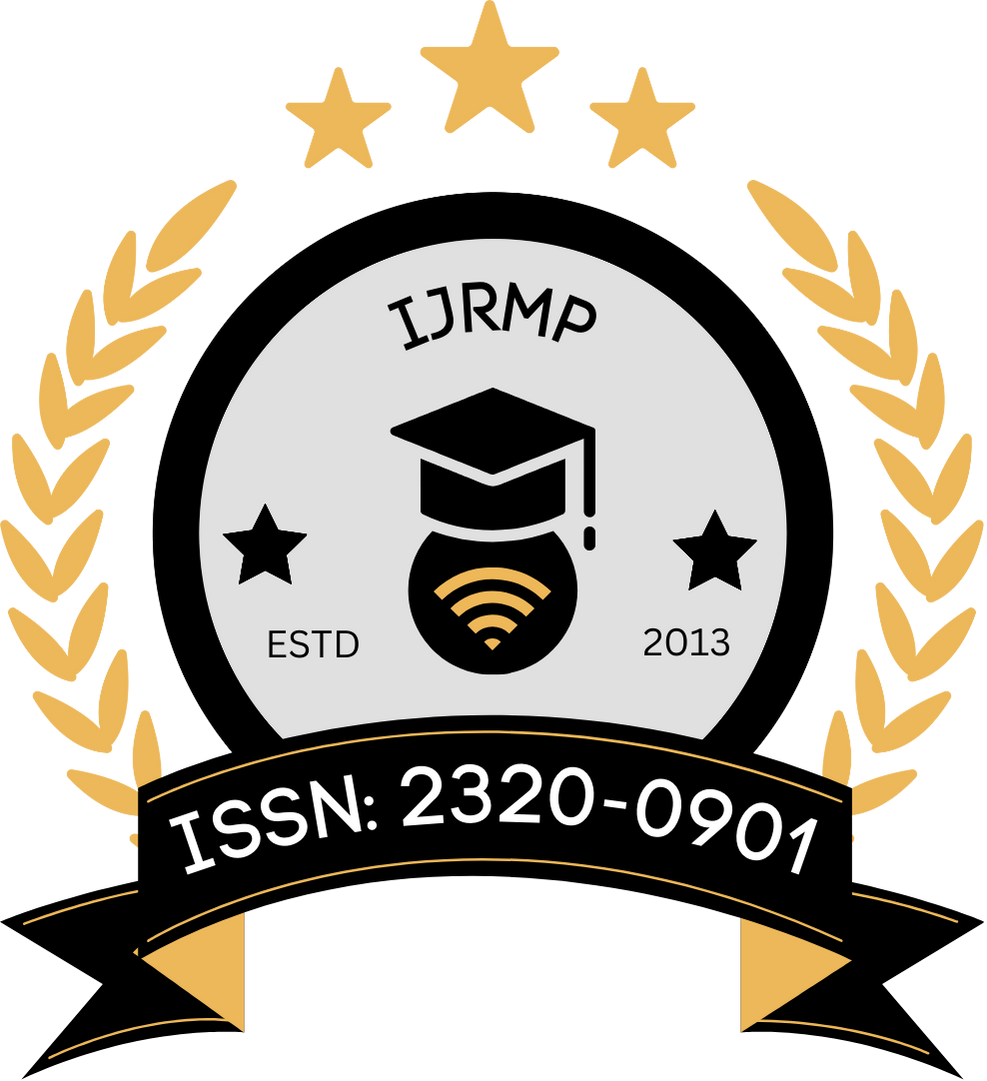![]()
DOI: https://doi.org/10.63345/10.63345/ijrmp.v13.i1.2
Meenal Rathore
Independent Researcher
Rajasthan, India
Abstract
Antibiotic resistance is an escalating global crisis, challenging conventional treatment regimens and demanding innovative therapeutic strategies. Recent advancements in artificial intelligence (AI) have paved the way for novel approaches in drug discovery, notably in the design of peptide drugs that can target resistant bacterial strains. This study investigates the impact of AI-generated peptide drugs on treating infections caused by antibiotic-resistant bacteria. Utilizing machine learning models to analyze vast chemical and biological datasets, AI-driven algorithms have been employed to generate and optimize peptide sequences with enhanced antimicrobial properties. These peptides are designed to exhibit strong activity against multidrug-resistant pathogens while minimizing cytotoxicity. Our research outlines the workflow from data acquisition and model training to in vitro validation and preclinical evaluation. Preliminary results indicate that AI-generated peptides not only show promising inhibitory activity against resistant bacteria but also possess unique structural features that may disrupt bacterial membranes or interfere with essential cellular functions. This manuscript reviews literature up to 2021, describes the methodology for generating and testing these peptides, presents experimental results, and discusses the potential clinical implications and future research directions. The integration of AI in peptide drug design represents a paradigm shift that could lead to more effective and targeted treatments for resistant bacterial infections, thereby reducing the morbidity and mortality associated with these pathogens.
Keywords
AI-generated peptides; antibiotic resistance; drug discovery; antimicrobial peptides; machine learning; resistant bacteria; peptide optimization
References
- https://www.google.com/url?sa=i&url=https%3A%2F%2Fwww.mdpi.com%2F1424-8247%2F17%2F11%2F1555&psig=AOvVaw2O08c-MP1Bz9Q7ODL9vMlg&ust=1741620434356000&source=images&cd=vfe&opi=89978449&ved=0CBQQjRxqFwoTCJjxx6eo_YsDFQAAAAAdAAAAABAE
- https://www.google.com/url?sa=i&url=https%3A%2F%2Fwww.mdpi.com%2F1424-8247%2F16%2F11%2F1615&psig=AOvVaw39P-F5PPIoZxO5o5jhUu8s&ust=1741620941045000&source=images&cd=vfe&opi=89978449&ved=0CBQQjRxqFwoTCMiA492p_YsDFQAAAAAdAAAAABA5
- Hancock, R. E. W., & Sahl, H.-G. (2006). Antimicrobial and host-defense peptides as new anti-infective therapeutic strategies. Nature Biotechnology, 24(12), 1551–1557.
- Ventola, C. L. (2015). The antibiotic resistance crisis: Part 1: Causes and threats. Pharmacy and Therapeutics, 40(4), 277–283.
- World Health Organization. (2019). Antimicrobial resistance: Global report on surveillance. World Health Organization.
- Fjell, C. D., et al. (2012). Designing antimicrobial peptides: A model for optimization of activity and selectivity. Biopolymers, 99(12), 837–844.
- Mookherjee, N., et al. (2020). Antimicrobial host defence peptides: Functions and clinical potential. Nature Reviews Drug Discovery, 19(5), 311–332.
- Lee, H. J., et al. (2019). Application of machine learning in peptide design. ACS Omega, 4(12), 17376–17384.
- DeGrado, W. F., et al. (2018). Artificial intelligence in drug discovery. Nature Reviews Chemistry, 2(3), 159–160.
- Zhang, L., et al. (2020). Advances in antimicrobial peptides: Emerging mechanisms and clinical applications. International Journal of Molecular Sciences, 21(20), 7445.
- Chou, K. C. (2005). Prediction of protein structural and functional properties. Molecular Biosystems, 1(2), 114–118.
- Li, W., et al. (2019). Deep learning in drug discovery and medicine: Scratching the surface. ACS Medicinal Chemistry Letters, 10(1), 2–3.
- Mangal, U., et al. (2017). Computational approaches to design antimicrobial peptides. Bioinformatics, 33(12), 1822–1830.
- Doshi, A., et al. (2019). AI in biomedicine: A future of innovative drug design. Journal of Biomedical Informatics, 99, 103290.
- Theuretzbacher, U., et al. (2019). Challenges and perspectives of antimicrobial drug discovery. Nature Reviews Drug Discovery, 18(3), 188–206.
- Huang, Y., et al. (2017). AI-driven peptide design for antimicrobial applications. Journal of Chemical Information and Modeling, 57(4), 968–978.
- Sliwoski, G., et al. (2014). Computational methods in drug discovery. Pharmacological Reviews, 66(1), 334–395.
- Brown, E. D., & Wright, G. D. (2016). Antibacterial drug discovery in the resistance era. Nature, 529(7586), 336–343.
- Kamysz, W., et al. (2020). Innovations in antimicrobial peptide therapy: Mechanisms and clinical perspectives. Peptide Science, 112(1), e24066.
- Wu, M., et al. (2018). AI-enhanced peptide screening for antimicrobial activity. Bioorganic & Medicinal Chemistry Letters, 28(12), 2033–2037.
- Velkov, T., et al. (2018). Overcoming resistance with AI-guided design of novel antimicrobial peptides. Journal of Medicinal Chemistry, 61(14), 5821–5835.
- Kapoor, P., et al. (2021). Machine learning in antimicrobial research: Progress and prospects. Frontiers in Microbiology, 12, 641421.
